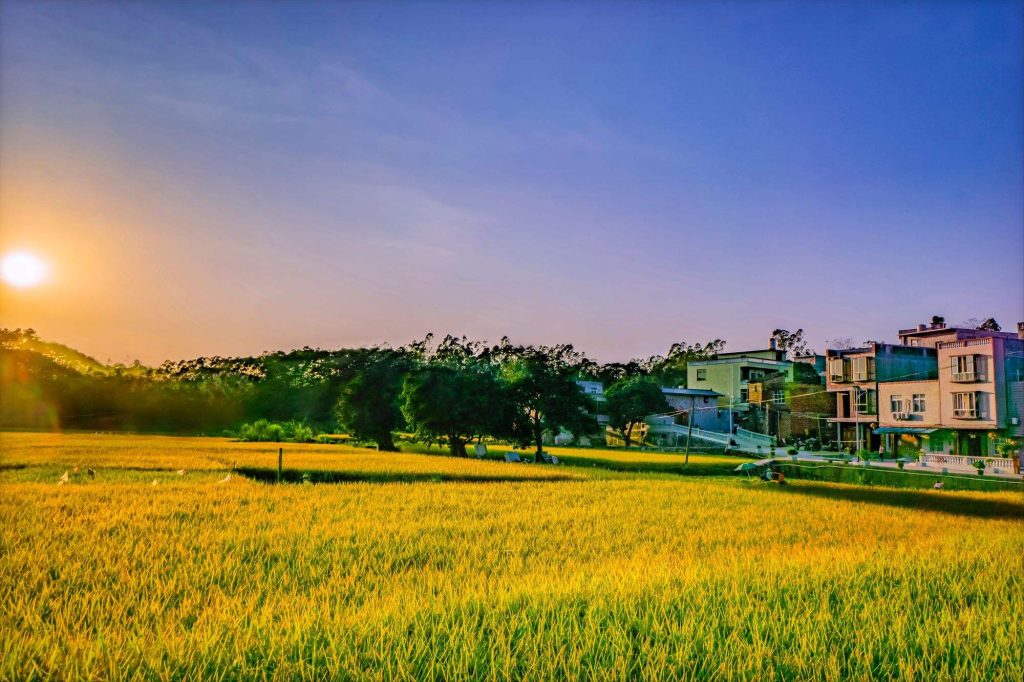The empty mudflat and desolate Alkali soil, once barren and barren barren land, have shown new vitality under the continuous promotion of more breeding of saline alkali tolerant plants by Chinese scientific and technological workers and the comprehensive development and utilization of Alkali soil and other cultivated land reserve resources.
Seawater rice “is one of the salt alkali tolerant plants. Seawater rice is not a rice grown in seawater, nor is it directly irrigated with seawater. “Seawater rice” is a figurative term for salt and alkali tolerant rice, which refers to a special kind of rice variety that has certain salt and alkali tolerance and can grow in coastal mudflat and Alkali soil without fear of short-term seawater immersion. Seawater rice does not have the same pests and diseases as ordinary rice, and its mineral content is higher than that of ordinary rice. It is a natural organic food.
Alkali soil has always been regarded as an “agricultural desert”. “It is white in spring, rainy in summer, no harvest in nine years, and half a year’s grain of bran and vegetable” explains the difficulty of growing grain in Alkali soil. In the eyes of agricultural scientists and technicians, planting sea rice is an important way to wake up this “sleeping” resource. Rational development and utilization of these Alkali soil resources is of great significance to ensure food security in China and promote sustainable agricultural development.
In 2012, the research and development team of seawater rice in China began technological breakthroughs. In 2017, the first generation of “sea water rice” was successfully planted in Qingdao, with a maximum yield of 620.95 kilograms per mu. Both in the bud stage and throughout the entire growth period, sea water rice varieties must undergo long-term and rigorous screening. Researchers have used gene sequencing technology to screen varieties with natural salt resistance, alkali resistance, and disease resistance genes. Currently, they have nearly 2000 germplasm resources. Not only that, the salt tolerance of the germplasm has also continuously improved, from the initial 3 ‰ to the current 8 ‰.
To achieve large-scale promotion and cultivation of salt alkali tolerant rice, screening germplasm alone is not enough, and a rigorous supporting system is necessary. Researchers have explored a set of Alkali soil improvement technology based on integrated irrigation and drainage system, Internet of Things sensor system, Big data agricultural information service system. The underground sensor senses the temperature, alkalinity, growth trend of sea rice, diseases and pests and other information, and transmits them to the Big data center in real time. Through artificial intelligence and expert diagnosis system, the soil salinity and water and fertilizer release are intelligently regulated, so that the soil and crops are “alive”.
During the ten years from 2012 to 2022, seawater rice in China has entered large-scale promotion from the stage of scientific research and experiment, and achieved full coverage of four major types of typical Alkali soil in China. In 2020, China will launch the “Ten Hundred Thousand” Project -100000 mu of seawater rice planting, 1 million mu of Alkali soil comprehensive utilization, and 10 million mu of usable Alkali soil reserves will be completed in that year. The project plans to transform 100 million mu of Alkali soil into granary in 8 to 10 years.
As of the end of 2022, the planting area of seawater rice in China has exceeded 1 million mu! The planting of sea rice can not only contribute to ensuring the food security of the country, but also adjust the soil quality of Alkali soil and mudflat, so that the bare ground with white salt becomes lush, which is of great benefit to the ecological environment.


No reply content